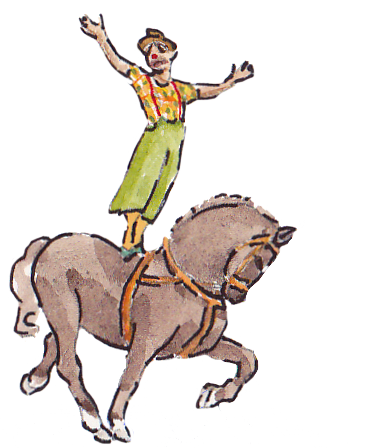 |
...everybody seems afraid that Blondin may fall before they are able to take their seats...
It is so delicious to see a man risk his life, without being in danger oneself, and so cheap too—for only half-a-crown.
—Charles Dickens
|
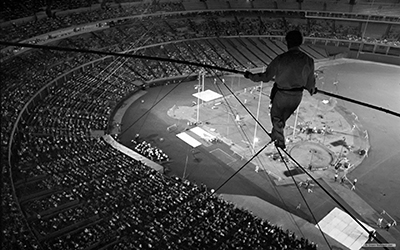 What is the point of watching someone put him or herself in danger?
What is the point of watching someone put him or herself in danger?
The point is not the danger, it's surviving danger vicariously. Witnessing survival is inspirational.
The admiring viewer gets an adrenaline rush, heightened when there are pretend (or real) mistakes.
But the danger is real.
Circus performers do get injured and, yes, die.
Early performers had no nets, and even with nets it was quite possible to be seriously injured. Performers need muscles, skill, and concentration.
Charles Blondin gained fame by walking a wire over Niagara Falls in 1859: afterwards his fame earned him a huge salary.
He took his five-year-old daughter across the circus high wire in a wheelbarrow. The audience rose in protest and the law stopped him.
In the 1950s people held a net under aerial acts in Madison Square Garden to fulfill a legal requirement, but this wouldn't have helped in a fall. There were other ways to break a fall but they didn't always work. |
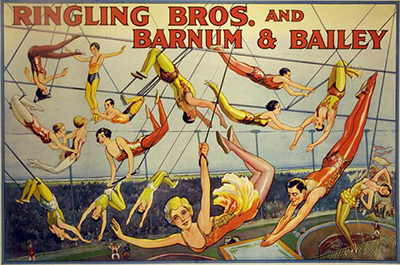 The flying trapeze is the most dazzling circus act... The flying trapeze is the most dazzling circus act...
Aerialists inspire in two other ways as they fly across the tent top. They demonstrate incredible interdependence, trusting each other with their lives. And they seemingly defy the laws of nature. What can't man do?
Flying on a trapeze is much more difficult than playing baseball, and is quite dangerous, for a fraction of the pay.
Gymnasiums sprang up in American cities when people were inspired by the daring aerial artists in the mid 1800s.
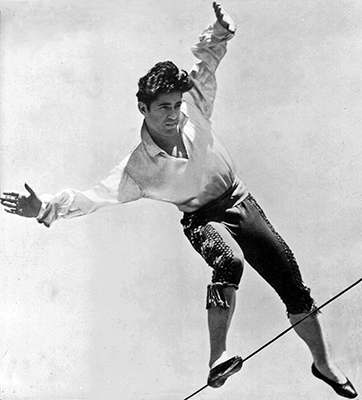
...but other dangers are also real in the circus.
Ropedancers and other acts at high altitudes have had fatal falls.
Ceiling walkers walk upside down on a "ceiling" suspended from near the top of the tent.
(You can see Groucho Marx and Eve Arden ceiling walk (but not so high) in the film At the Circus.)
|
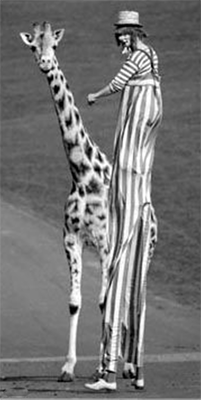 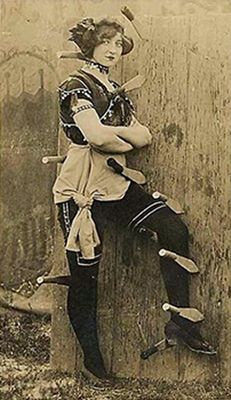 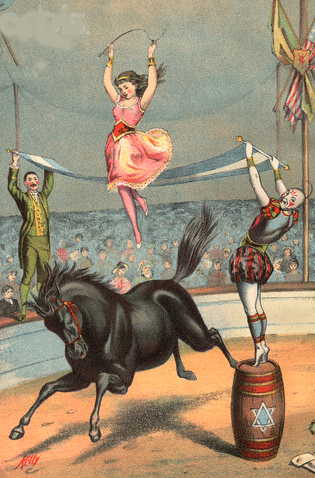 There are also many dangers close to the ground: There are also many dangers close to the ground:
- often equestrian acts are more dangerous than aerial acts,
- working with wild animals always contains an element of danger,
- "pillars" with multiple people standing on each other’s shoulders could fall,
- sideshow acts like sword swallowing and knife throwing have been fatal, and
- even a clown on tall stilts can be seriously injured if someone bumps into him.
|
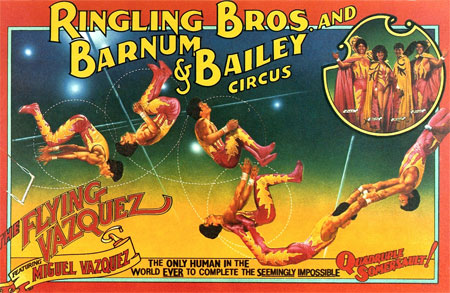 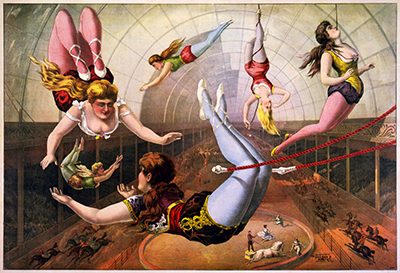 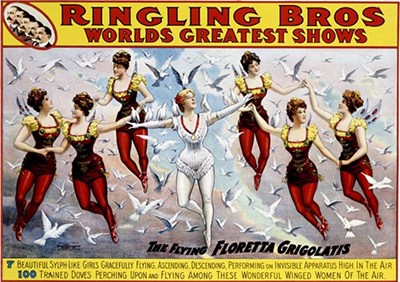  |
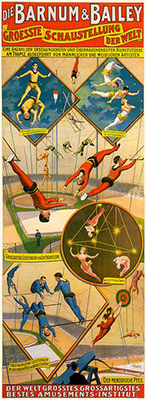 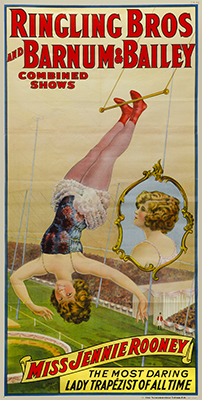 |
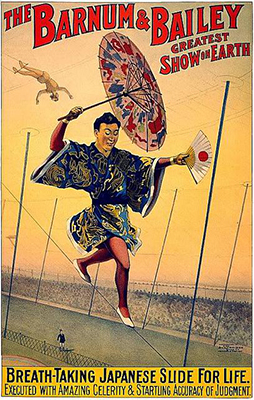
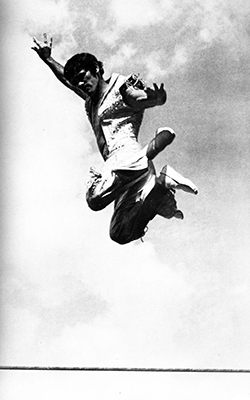 |
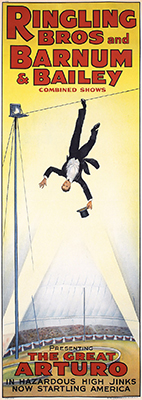 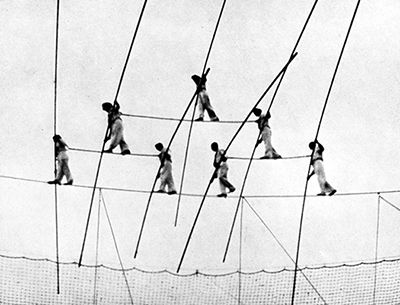 .jpg) |
|
|

|
| |
|
| |
|
 |
For dreadful stories of perils and calamities:
|
|
 |
|
| |
|
|
